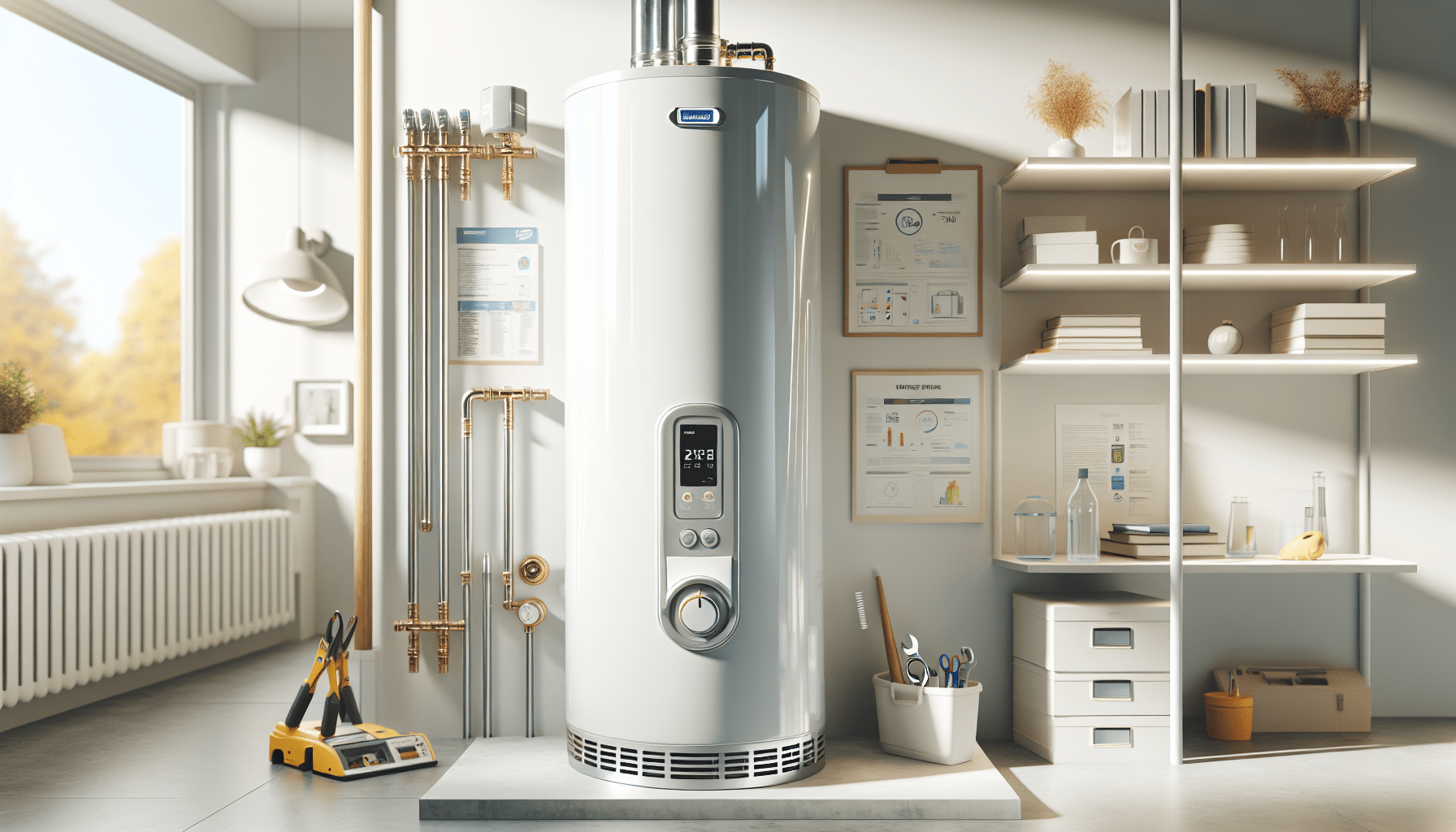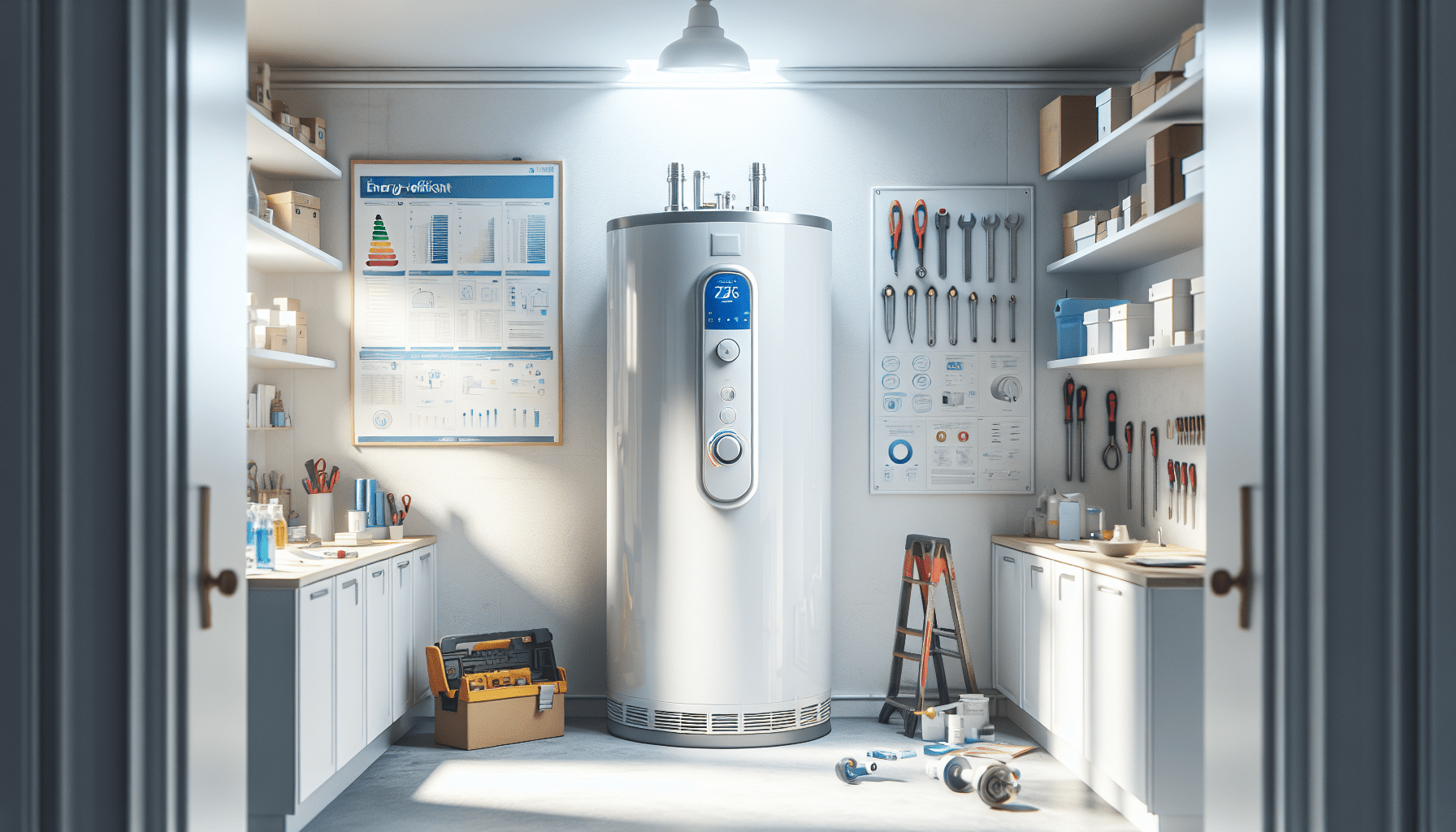What if your morning ritual was disrupted by a lukewarm shower? The kind that leaves you shivering uncontrollably and questioning all your life choices? Choosing the right water heater can make all the difference, ensuring you’re greeted with the delightful embrace of hot water instead of an unwelcome chill. Let’s unravel the ins and outs of selecting the perfect water heater for your home.

Understanding Water Heater Basics
Before you make a decision, it’s essential to get acquainted with how these devices operate. A water heater is more than just a large tank lurking in a basement; it’s a complex machine designed to provide you with comfort.
How a Water Heater Works
Regardless of whether it’s gas or electric, the basic principles behind water heaters are straightforward.
-
Gas Water Heaters: These handy units feature a gas burner located at the bottom, heating the water from below. A vent pipe runs up through the middle of the tank to carry any exhaust gases away safely.
-
Electric Water Heaters: These models utilize two heating elements that heat the water in the tank much like a kettle on your stove.
A water heater consists of several key components:
- Glass Lined Steel Tank: This is where the magic happens—it holds the hot water.
- Insulation: Designed to keep your water hot without wasting energy, it surrounds the tank.
- Dip Tube: This allows cold water to enter the tank, where it gets heated.
- Thermostat: A handy little gadget that monitors the water temperature and ensures it stays just right.
- Heating Elements or Gas Burner: These are responsible for heating the water.
- Drain Valve: Useful for flushing and maintaining the tank, this allows you to drain the water.
- Temperature & Pressure Relief Valve: This safety feature prevents damage by releasing excess pressure.
- Anode Rod(s): These quiet heroes work to keep your tank from corroding, extending its lifespan.
Measuring Efficiency
You may be wondering, “How do I know if my water heater is efficient?” A good starting point is the Energy Factor (EF). This rating measures:
- Recovery Efficiency: How effectively heat transfers from the energy source to the water.
- Heat-loss Factors: Various influences that can cause heat loss over time.
In essence, the higher the EF, the more efficient the unit. Generally, electric water heaters have superior EF ratings compared to their gas counterparts. This little number might seem insignificant, but it can save you money on your energy bills in the long run.
Types of Water Heaters
When faced with the vast array of water heaters available today, you may feel overwhelmed. Fear not! Here’s a breakdown of the popular types, making it easier for you to decide which fits your lifestyle best.
Conventional Storage Water Heaters
These are the classic water heaters you probably envision—a large tank that stores and heats water. They come in both gas and electric options.
- Pros: Low initial cost and simple installation. They typically provide a stable supply of hot water.
- Cons: Takes up space and can be slow to recover after heavy usage.
Tankless Water Heaters
Also known as on-demand water heaters, these units heat water directly without using a storage tank.
- Pros: Energy-efficient, as they only heat water when needed; compact size.
- Cons: Higher upfront cost and might struggle to supply hot water for multiple tasks simultaneously.
Heat Pump Water Heaters
Utilizing electricity to move heat from one place to another rather than generating it directly, heat pump water heaters are incredibly efficient.
- Pros: Higher efficiency compared to conventional models; can also provide cooling.
- Cons: Relatively high initial investment and requires a specific environment to operate effectively.
Solar Water Heaters
Harnessing the sun’s energy, these systems can be highly efficient and environmentally friendly.
- Pros: Extremely low operating costs and reduced carbon footprint.
- Cons: Requires significant sunlight; initial costs can be high, and backup systems may be necessary.
Capacity Considerations
When deciding on the right water heater for your home, the capacity of the tank or unit is vital. How many people live in your home? How much hot water do you typically use?
Sizing Your Water Heater
For conventional water heaters, a general rule of thumb is:
- 1-2 people: A 30-40 gallon tank should suffice.
- 3-4 people: Aim for a 40-50 gallon tank to accommodate demand.
- 5 or more people: You may want to consider a 50-80 gallon tank.
If you’re leaning towards a tankless model, the sizing can be more complex since you’ll need to calculate the maximum flow rate for your household to ensure it can handle multiple showers and appliances running simultaneously.
Estimating Flow Rates
To calculate your flow rates, know the average gallons per minute (GPM) each fixture uses:
| Fixture | Flow Rate (GPM) |
|---|---|
| Shower | 2.0 – 2.5 |
| Kitchen Faucet | 2.0 |
| Dishwasher | 1.5 – 2.0 |
| Bathroom Faucet | 0.5 – 1.0 |
| Washing Machine | 2.0 – 3.0 |
Total the GPM for all fixtures you might use at the same time to determine your required flow rate and subsequently, the right tankless water heater model.
Fuel Source Options
The choice of fuel source impacts your overall efficiency and operating costs. The most common options include:
Natural Gas vs. Electric
-
Natural Gas: Generally cheaper and provides faster recovery rates, making it great for larger households. However, installation can be more complicated, and it requires venting.
-
Electricity: Easier to install with fewer safety considerations, but electricity costs vary by location and can add to your monthly bill.
Propane
If natural gas isn’t available in your area, propane is a viable alternative. It tends to be slightly less economical compared to natural gas but can still be a good option.
Solar Power
If you’re environmentally conscious, solar water heaters can significantly reduce energy costs in the long run—but be mindful of your location and sunlight availability.

Installation and Maintenance
Once you have your water heater of choice in mind, it’s crucial to consider installation and proper maintenance. A poorly installed unit can lead to endless headaches.
Professional Installation
Opting for professional installation can save you time and reduce the risk of issues down the line. Certified technicians ensure that your unit complies with local codes, maximizes efficiency, and minimizes leaks. They’ll understand the ins and outs of venting gas units or electrical wiring.
Maintenance Tips
To extend your water heater’s lifespan and maintain its efficiency, it’s wise to undertake regular maintenance:
-
Flush & Drain Your Water Heater: Sediment can accumulate over time, so it’s beneficial to flush it at least once a year to keep it running optimally.
-
Check the Anode Rod: This little component plays a significant role in preventing corrosion; make it a habit to inspect it every few years.
-
Adjust the Thermostat: Keeping your water heater set between 120-140°F can save energy and prevent scalding.
-
Inspect the Pressure Relief Valve: Regularly test this valve to ensure it’s functioning correctly. This helps prevent dangerous pressure build-up.
-
Look for Leaks: Check regularly for any signs of leaks around the tank and connections.
-
Schedule Routine Professional Checks: It’s often worth the investment to have a technician inspect your unit yearly.
How to Flush & Drain Your Water Heater
Let’s break down the steps for flushing and draining your water heater. This process can feel daunting, but it’s quite manageable when you know what to do.
-
Turn Off the Heater: For electric heaters, simply turn the power off at the circuit breaker. For gas heaters, set the control to the pilot light setting.
-
Shut Off the Cold Water Intake Valve: Located at the top of the unit, shutting this off allows you to drain without refills.
-
Open a Hot Water Faucet: This step vents the system and speeds up the flow of the water leaving the tank.
-
Connect a Garden Hose to the Drain Valve: Position it outside or inside a bucket—whichever you prefer—and open the valve.
-
Drain the Tank: Water will flow out at about a gallon per minute. After a while, fill a glass with water from the tank to check the sediment level.
-
Flush Out Remaining Debris: After draining, you’ll want to reverse the process to flush remaining debris. Close the faucet from which you drew water and turn the supply valve back on to flush.
-
Close the Drain Valve and Remove the Hose: Once you are confident it’s clean, close the valve and let the tank refill. Finally, restore power or gas.
Conclusion
With a bit of knowledge under your belt, you might feel more equipped to navigate the world of water heaters. The right choice hinges on efficiency, capacity, fuel source, installation, and maintenance. Choosing the right water heater is akin to choosing a companion for all your hot water needs—make sure it’s the right fit! Whether you lean towards an electric model or opt for a snazzy tankless design, the ultimate goal remains the same: a hot shower that makes you feel it was all worth it. Here’s to a lifetime of warm baths, steamy showers, and cozy comforts!

